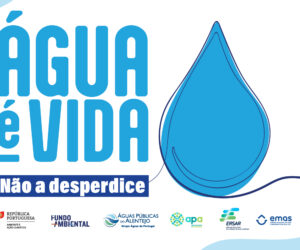Opinion (Rogério COPETO / Official GNR): ROAD ACCIDENT: A PUBLIC HEALTH PROBLEM.
With regard to road accidents in our country, the last year was especially tragic, taking over 130 thousand accidents, died 509 people and other two thousand resulted seriously injured, beyond the 41.591 injured passenger.
Lieutenant Colonel of the GNR, Master in Law and Security and Homeland Security Auditor
Head of the Education Division / Command Doctrine and Training
Compounding this tragic scenario, in the first four months of this year were registered 42.180 road accident which resulted 137 fatalities.
Given the above figures it appears that every year hundreds of families lost their loved ones, therefore we can not remain indifferent to the tragedy that occurs on our roads, alerting us to the importance of road safety have this unrelenting fight and continues to make hundreds fatalities.
It is common knowledge, that Portugal after the 25 April 1974 had the worst road accident rates in europe, but over the last 44 years much has changed and a long way has been traveled, where better roads, best cars, greater effectiveness of the PSP and GNR, over road safety campaigns and highway code more appropriate to reality, They have and continue to play an important role in reducing serious road accidents, which was found to 2016, with this trend was reversed last year and the visa continues this year, Portugal and is therefore more away to achieve their stated objectives in "National Road Safety Strategic Plan – THOUGHT 2020", which aims at the end of its term, achieve the 41 killed per million inhabitants.
It also unanimously accepted by all the road accidents is associated with a question of attitudes and behavior of citizens, and it is for that reason that the Portuguese are still dying on national roads as a result of road accidents.
So the focus on "Road Education" still makes sense, for the training of citizens, to develop a set of skills while passengers, pedestrians and drivers, promoting their safe integration in the road environment, knowing that influence behavior of each of the other conditions and, Depending on the well-being of all.
In this perspective the work of the GNR and the PSP, under the Safe School Program, in the field of road safety, It has played a leading role in the education of our children and future drivers, and so we have now more aware and responsible drivers.
But road accidents is also a social problem of worrying dimension, that justifies the intervention of the Portuguese society, It is recognized by World Health Organization (OMS) as a serious public health problem, heavy social and economic consequences.
Today on the roads around the world die each year around 1,3 million people and between 20 and 50 million injured as a result of road accidents, one of the main causes of death in all age groups and the leading cause of death among 15 a 29 years.
They derived from the most recent estimates on the overall health and are at the World Road Safety Report, published in 2015, WHO, showing that deaths and injuries as a result of road accidents remain a serious public health problem.
This serious public health problem is supported by a set of facts, verifying that about 93% of total deaths as a result of road accidents occur in developing countries where routes are registered slightly more than half of all existing vehicles (54%).
Another important fact is that vulnerable users, pedestrians, cyclists, drivers and passengers of motor vehicle 2 and 3 wheels, represent half of all deaths resulting from road accidents worldwide, and this even higher proportion in developing countries.
It is known that one of the main causes of accidents is speed, whereby as average speed increases, also increases the likelihood of an accident, also increasing the severity of its consequences, verifying that an increase of 1 km / h on the average vehicle speed results in increased 3% in the incidence of accidents, where result wounded and an increase of 4% a 5% in the incidence of accidents which result deaths, whereas only 47 countries, that represent 13% the world population, They have laws which require vehicles in urban areas below 50 km/h, still having the legitimacy authorities to change this limit, when necessary, to ensure greater safety.
Another responsible for road accidents is driving after drinking alcohol, by WHO warns that driving with a Blood Alcohol Fee (TAS) of 0.05 g / dl dramatically increases the risk of an accident, recommending a BAC ≤ 0,05 g / dl for the conductors and in general a limit ≤ 0,02 g / dl for new drivers encartados, that being in just 34 countries, representing 29% the world population, They have laws that comply with these limits.
In the case of cyclists and motorcyclists can be seen that the use of an approved helmet, You can reduce the risk of death 40% and serious injuries in approximately 70%, that being in just 44 countries, representing 17% the world population, They have laws requiring the use of approved helmets for motorcyclists and passengers, on all roads, and regardless of the displacement and engine.
Also the use of seat belts can reduce 45% a 50% fatal and non-fatal consequences among the occupants of the front seats and between 25 and 75% the occupants of the seats of the rear seats, and in that 105 countries, representing 67% the world population, They have laws on compulsory use of safety belts for all occupants of the vehicle.
With regard to the transport of children, the use of restraint systems for children (SRC) reduces the risk of serious injuries to 80% compared with children who use only the seat belt, whereas only 53 countries, representing 17% the world population, They have mandatory use laws CRS for transport of children appropriate to their age, height and weight.
The provision of timely and effective relief after road accidents also saves lives and reduces their consequences, so the main solutions for the development of systems for help in emergency situations means implementing emergency phone numbers, linked to integrated pre-hospital care and emergency services, should all agents be trained in Basic Life Support in emergency situations.
Given that road safety also involves the vehicles, since they play a critical role, both to avoid accidents, and to reduce the consequences in case of accident, However it appears that 80% of the vehicles sold around the world lack the basic safety standards, defined by the United Nations World Forum for Harmonization of Vehicle Regulations, and only 40 countries (35 developed countries) They adopted all regulations of this body.
In addition to the vehicles also infrastructure have an important role in road safety, as an unsafe road infrastructure contributes to increase the risk of a road accident, so the implementation of best practices in the development of road projects, may have a considerable impact on their safety, the roads should be designed taking into account the safety of all users, meaning to ensure there is adequate facilities for pedestrians, cyclists and motorcyclists, such as footpaths, bike paths, safe passage points and other traffic calming measures, which are essential to reduce the risk road accidents.
We end with the words of the WHO Director-General, Drª Margaret Chan em 2015: "The objective of saving 50% the dead and injured as a result of road accidents by 2020 It allows governments, organizations and the international community to concentrate efforts, Now the challenge being to take this opportunity that arises you, changing the current situation of road deaths in a measurable decrease".

























